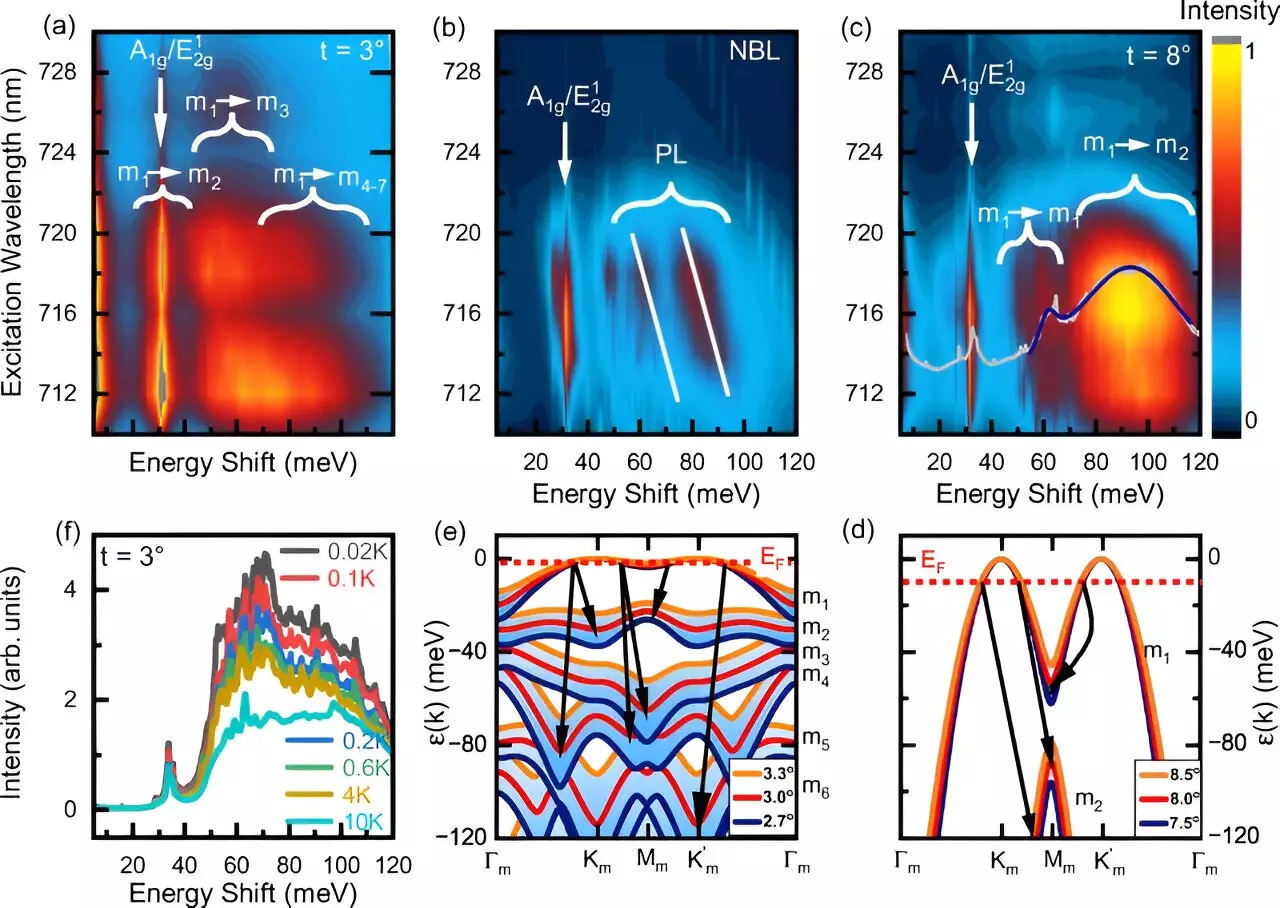When a material is reduced to just one or two layers of molecules, it can undergo a remarkable transformation. This transformation leads to the material having different properties compared to when it is thicker. Researchers, led by physicist Prof. Ursula Wurstbauer from the University of Münster, are delving into how the properties of two-dimensional crystals can be manipulated to exhibit behaviors such as acting as an insulator, an electrical conductor, a superconductor, or a ferromagnet.
The key lies in understanding the interactions between the charge carriers (electrons) within the crystals and the energy landscape. By harnessing these interactions, the research team has successfully generated and quantitatively demonstrated collective excitations of the charge carriers within various energy landscapes. This breakthrough study, outlined in a publication in Physical Review Letters, pushes forward our comprehension of the electronic characteristics of crystal structures and unveils methods to influence them.
To achieve varied properties in the two-dimensional crystals, the scientists stacked two layers of a crystal on top of each other and slightly twisted them, resulting in geometric patterns known as moiré patterns. These patterns shape the energy landscape, causing the electrons to move at a slower pace and interact more significantly with each other. This phenomenon can lead to what is known as strongly correlated behavior among the electrons.
In explaining the behavior of electrons within these moiré patterns, Prof. Wurstbauer draws a comparison to the chaotic movements seen in a disco compared to the synchronized dance patterns of a standard dance. The electrons ‘feel and see’ each other within the moiré patterns, influencing their motions based on the pattern, the number of charge carriers present, and the resulting energy landscape.
The potential applications of these unique material systems extend beyond basic research, with promising prospects in quantum technology and the development of neuromorphic components and circuits. Prof. Wurstbauer emphasizes the innovative possibilities that these properties may offer in various technological fields.
The research team, comprising scientists from the University of Hamburg, RWTH Aachen University, and the Max Planck Institute for the Structure and Dynamics of Matter in Hamburg, alongside Prof. Wurstbauer’s research group, combined experimental work with theoretical analyses. By utilizing optical spectroscopy methods at cryogenic temperatures, they examined different two-dimensional crystals like graphene, molybdenum diselenide, and tungsten diselenide to gain a deeper understanding of their electronic characteristics and behaviors.


Leave a Reply